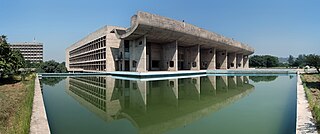| Moti Mahal, Mandla | |
|---|---|
 |
Moti Mahal is a palace in Mandla district, Madhya Pradesh, India.
| Moti Mahal, Mandla | |
|---|---|
 |
Moti Mahal is a palace in Mandla district, Madhya Pradesh, India.
The palace was built by the Gond ruler Hirde Shah.
In 1984 it was declared a state-protected monument, and in 2024 it was added to the tentative list of the World Heritage Sites. [1]
The palace faces north, and has a view of the Narmada River. It is a quadrangular structure, three stories tall, with a large central courtyard. [1]

A World Heritage Site is a landmark or area with legal protection by an international convention administered by the UNESCO. World Heritage Sites are designated by UNESCO for having cultural, historical, scientific or other forms of significance. The sites are judged to contain "cultural and natural heritage around the world considered to be of outstanding value to humanity".

Tourism in Croatia is a major industry of country's economy, accounting for almost 20% of Croatia's gross domestic product (GDP) as of 2021.

Mandla District is a district of Madhya Pradesh in central India. The town of Mandla is the administrative headquarters of the district. It is part of Jabalpur Division.

The World Heritage Convention, formally the Convention Concerning the Protection of the World Cultural and Natural Heritage, is an international treaty signed on 23 November 1972, which created the World Heritage Sites, with the primary goals of nature conservation and the preservation of cultural properties. The convention, a signed document of international agreement, guides the work of the World Heritage Committee. It was developed over a seven-year period (1965–1972).

Madan Mahal is a suburban area of Jabalpur famous for the historical Durgavati fort. The area also has a railway station named Madan Mahal.

The Roman Monuments, Cathedral of St. Peter and Church of Our Lady in Trier are buildings and monuments of particular historical importance in Trier, Germany, that were together listed as a UNESCO World Heritage Site in 1986. These sites demonstrate the political, economic, and historical importance of Trier during the Roman Empire as one of the four capital during the Tetrarchy period, and as a prominent city during the early days of the Holy Roman Empire in the Middle Ages.

The Neustadt is a district of Strasbourg, Bas-Rhin, France. In 2017, the heart of the district was listed as a World Heritage Site by UNESCO, as an extension of the site including the older city centre and Strasbourg Cathedral. The district is a unique example of city planning, merging the Haussmannian model with elements of German architecture and urban planning.

Chandigarh Capitol Complex, located in sector-1 of Chandigarh city in India, is a government compound designed by the architect Le Corbusier and is a UNESCO World Heritage Site. It is spread over an area of around 100 acres and is a prime manifestation of Chandigarh's architecture. It comprises three buildings: the Palace of Assembly or Legislative Assembly, Secretariat Building and the High Court plus four monuments and a lake. It was added to the UNESCO World Heritage Site List in 2016 along with sixteen other works by Le Corbusier for its contribution to the development of modernist architecture.
Hridayshah, also called Hirde Shah, was the 54th and last great king of Garha-Mandla. Hridayshah was a great patron and lover of music, and wrote the musical compostions of "Hriday Koutuk" and "Hriday Prakash" in 1660. He moved his kingdom's capital from Chouragarh to Ramnagar of Mandla district to secure it from Bundela attacks.